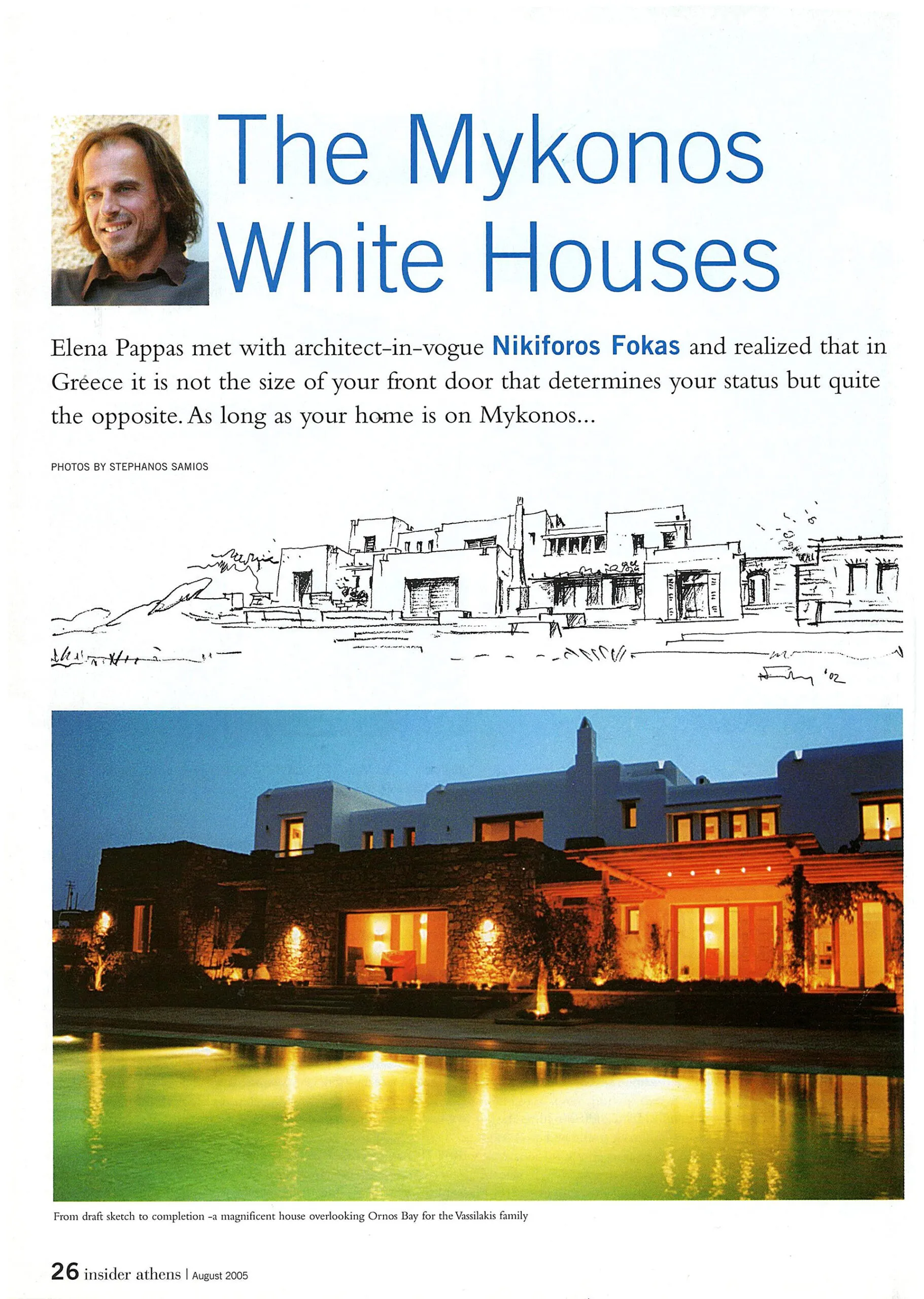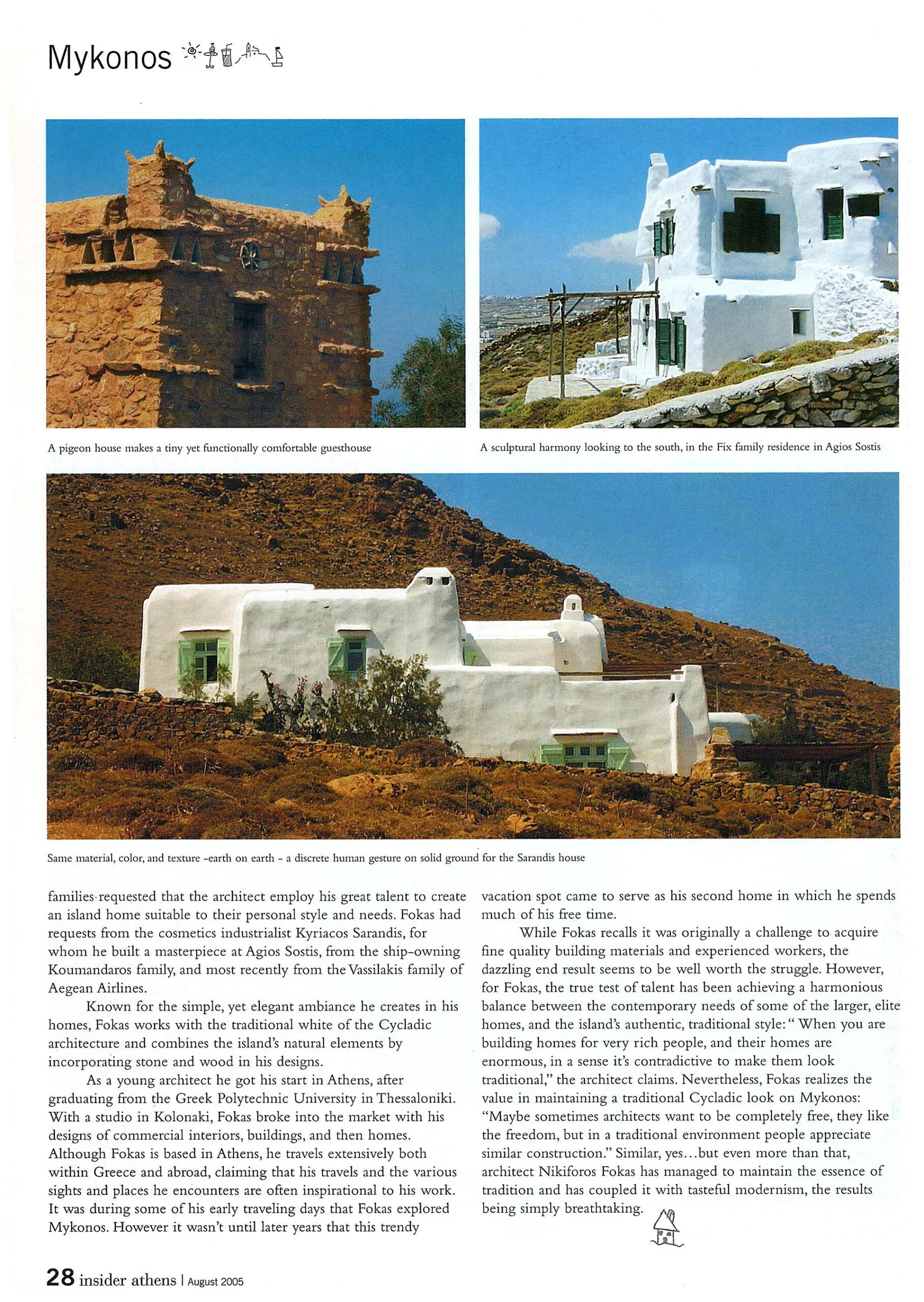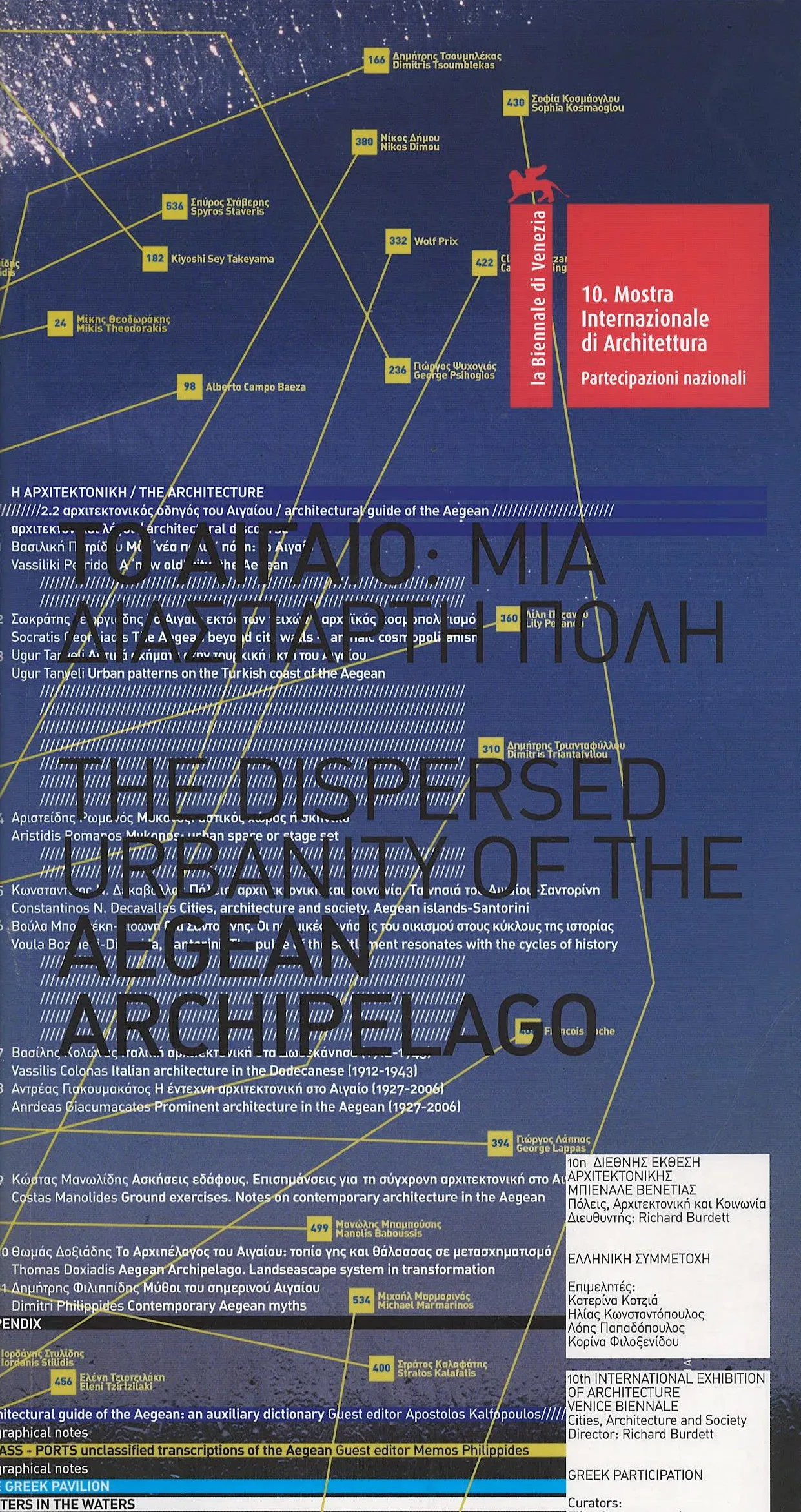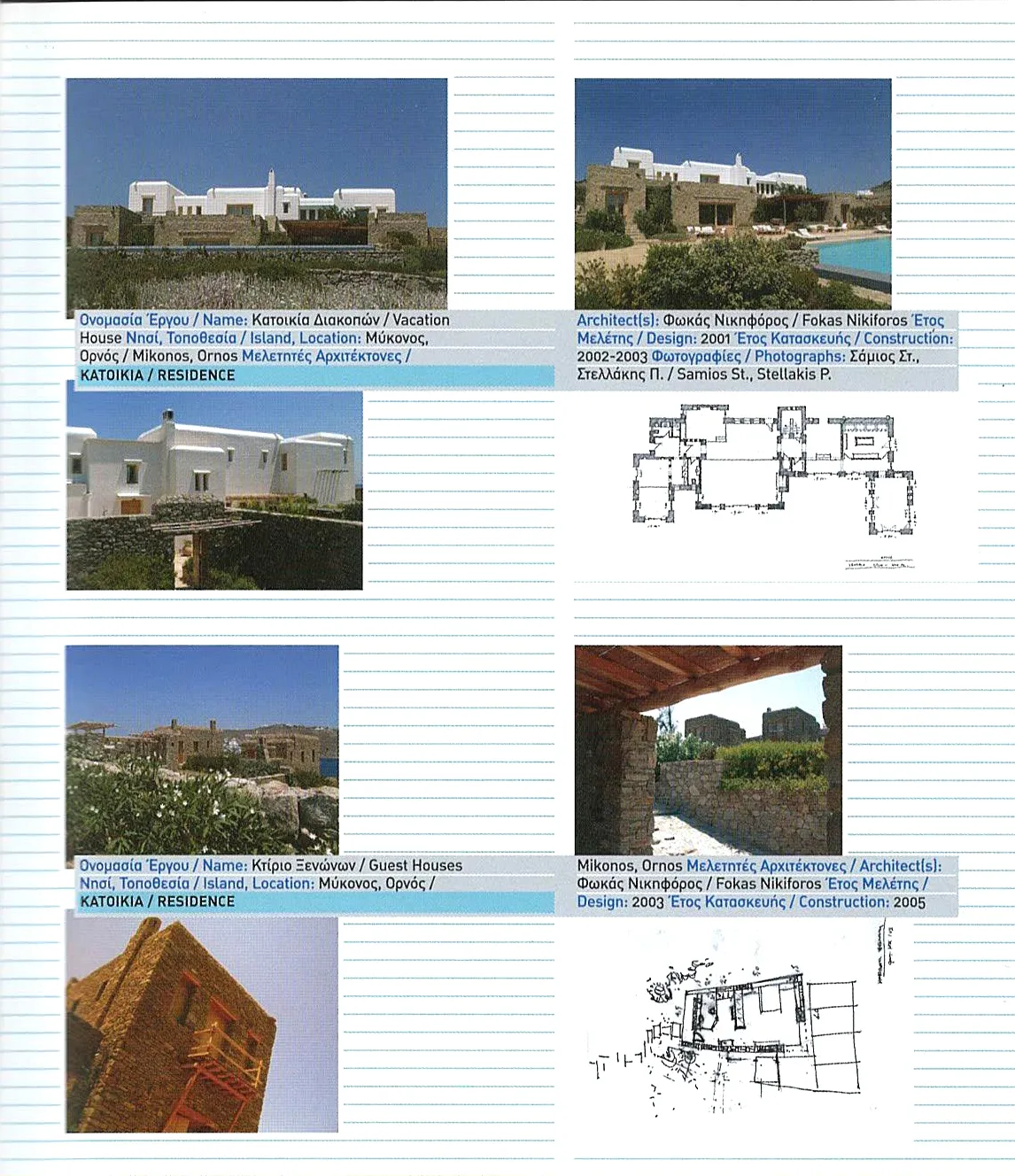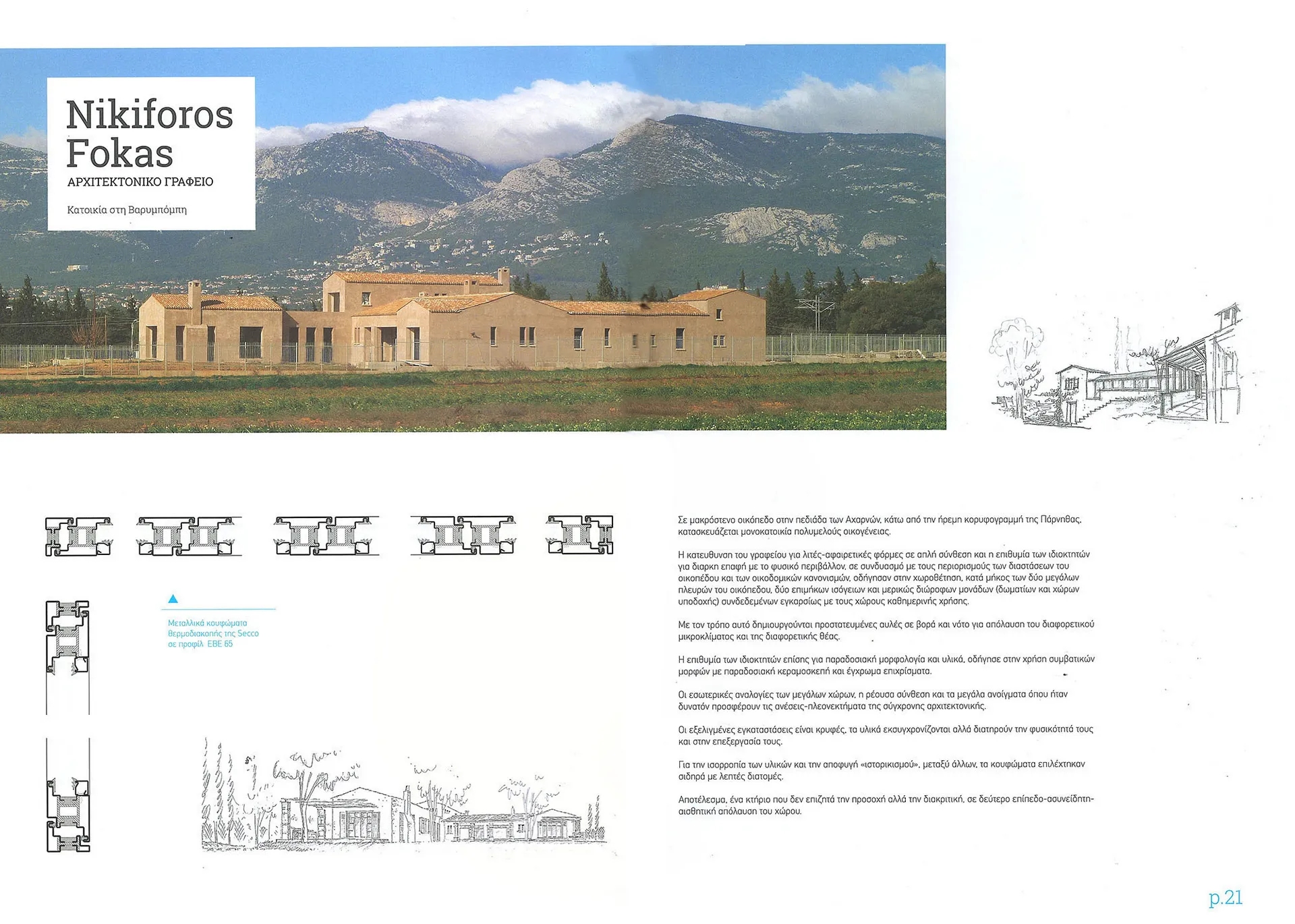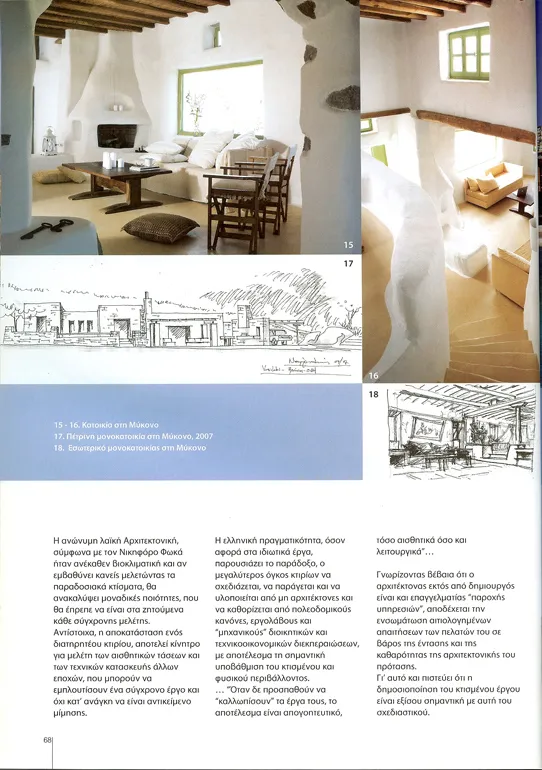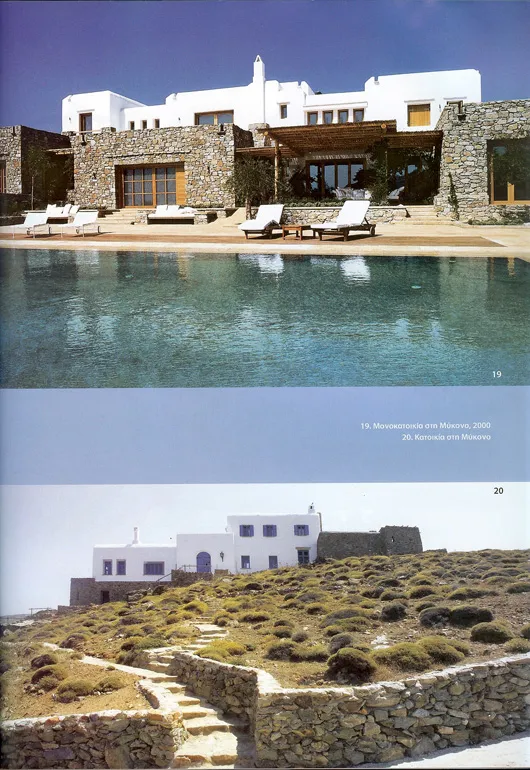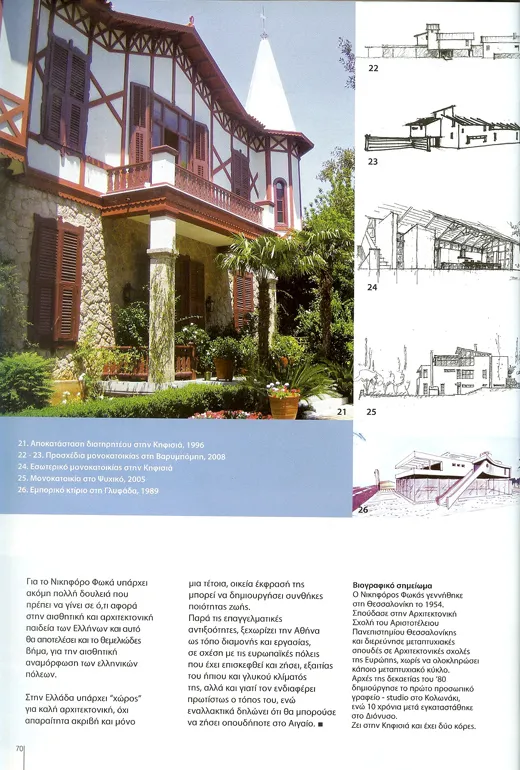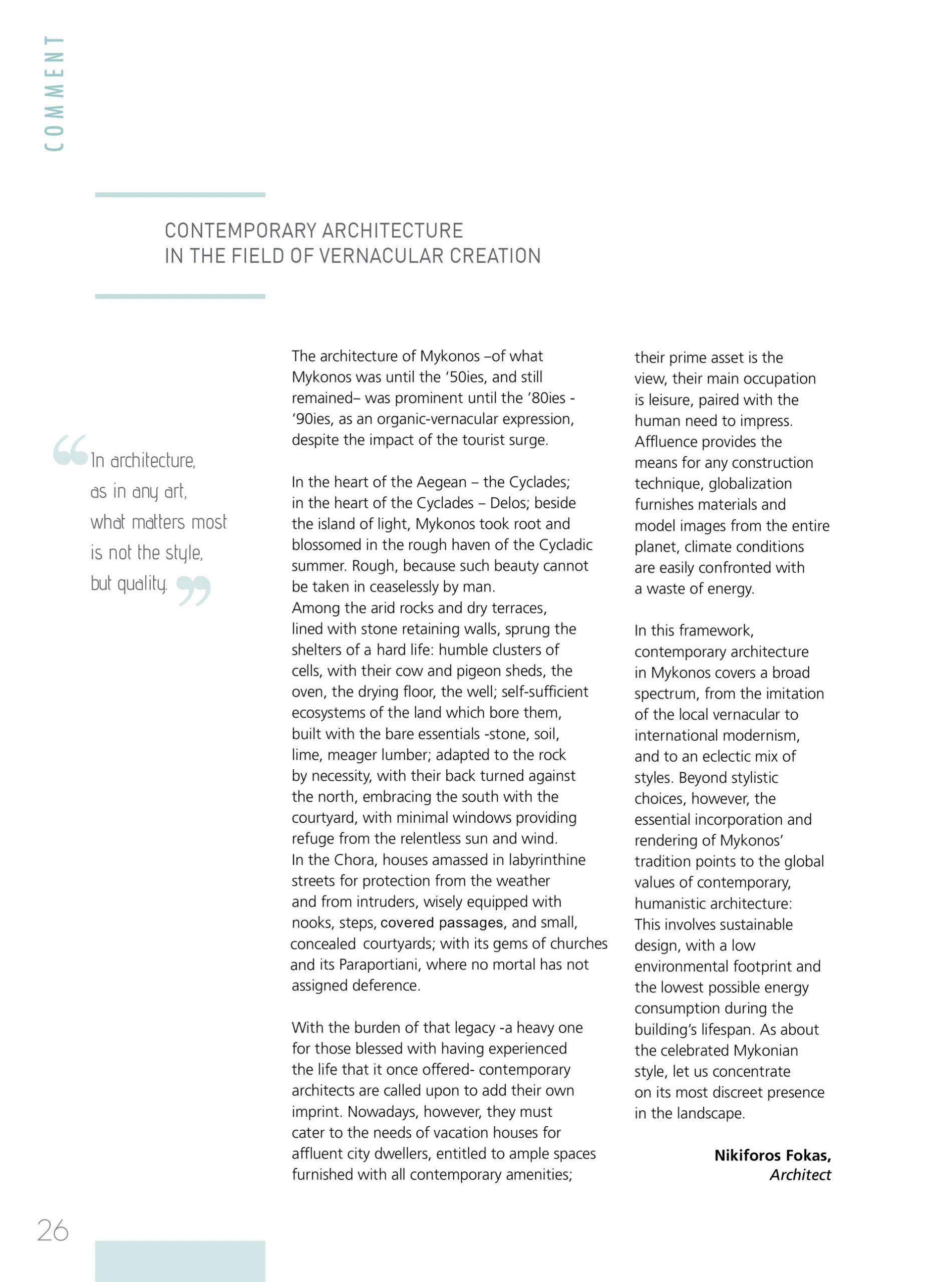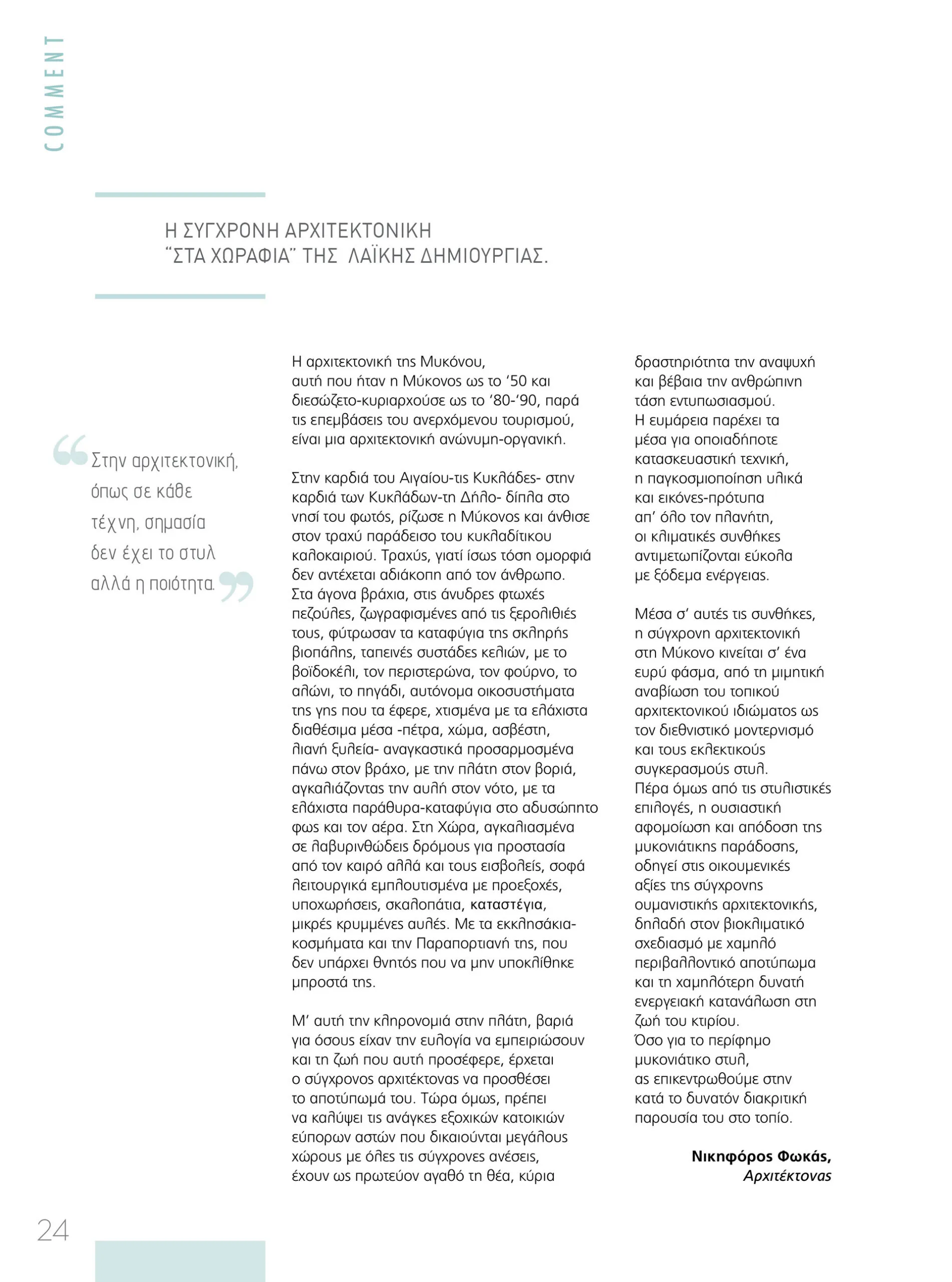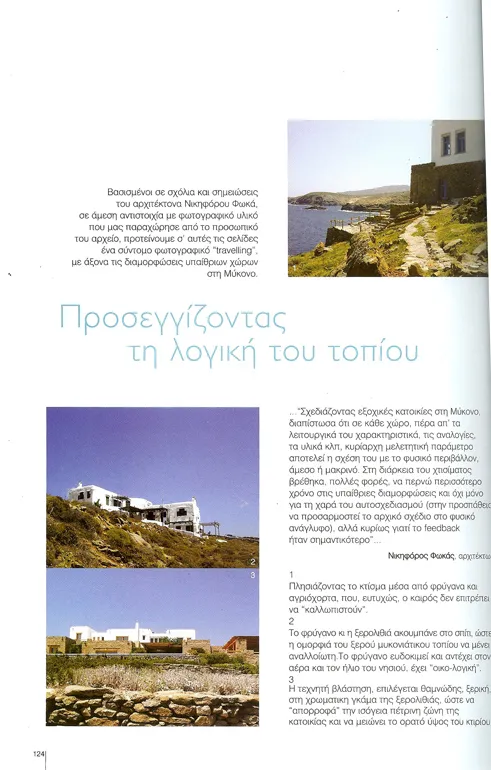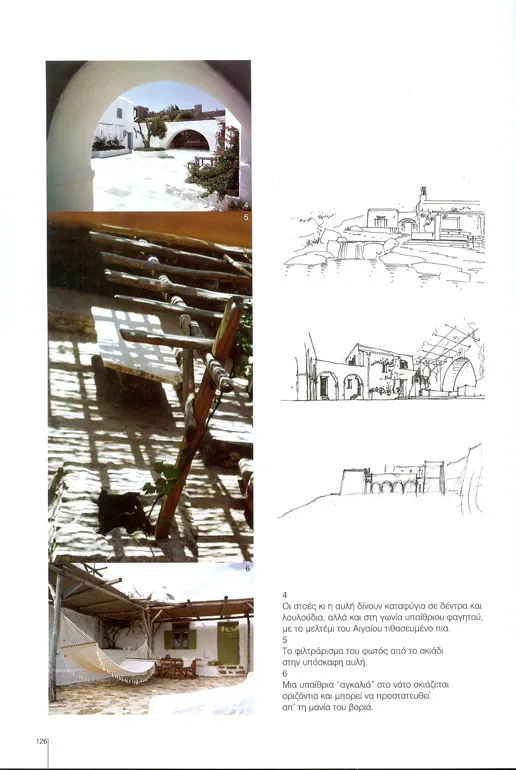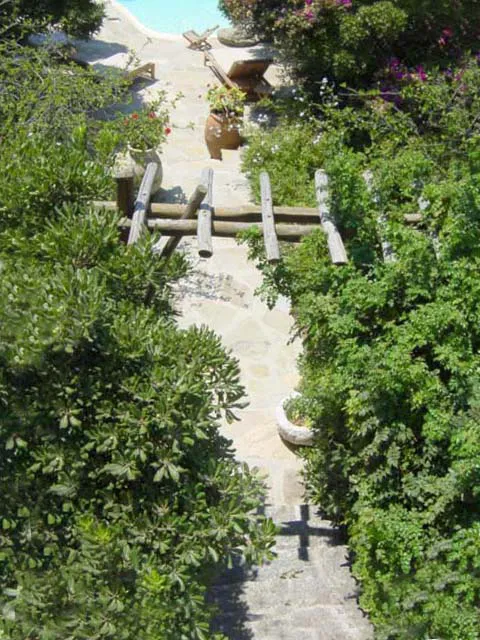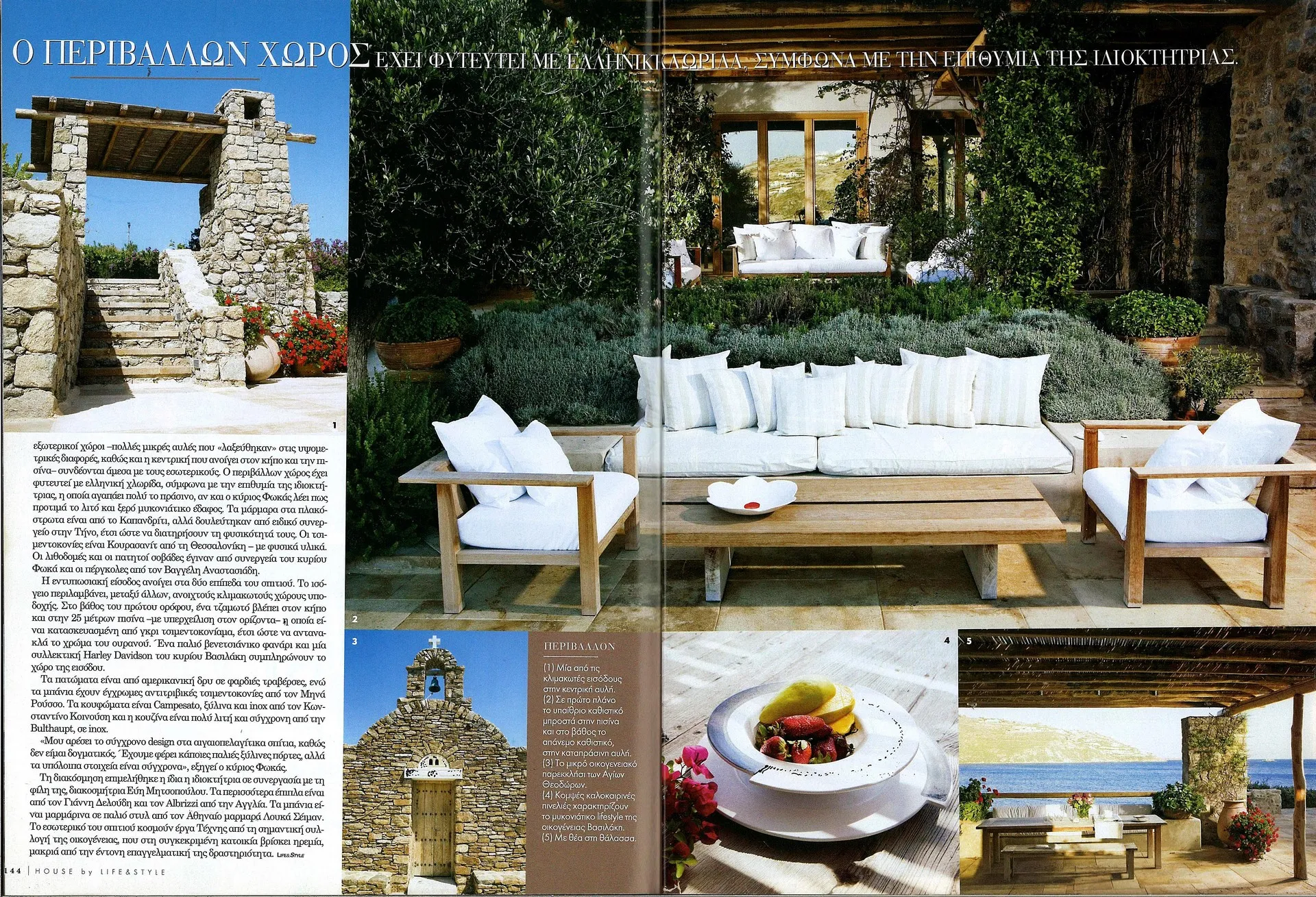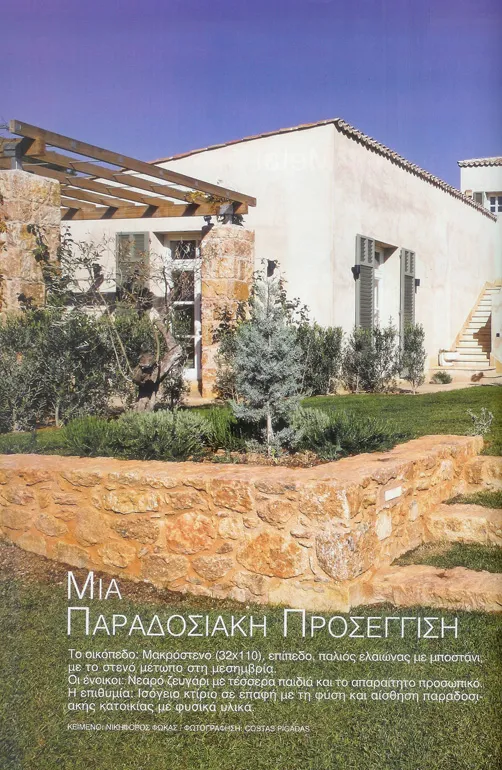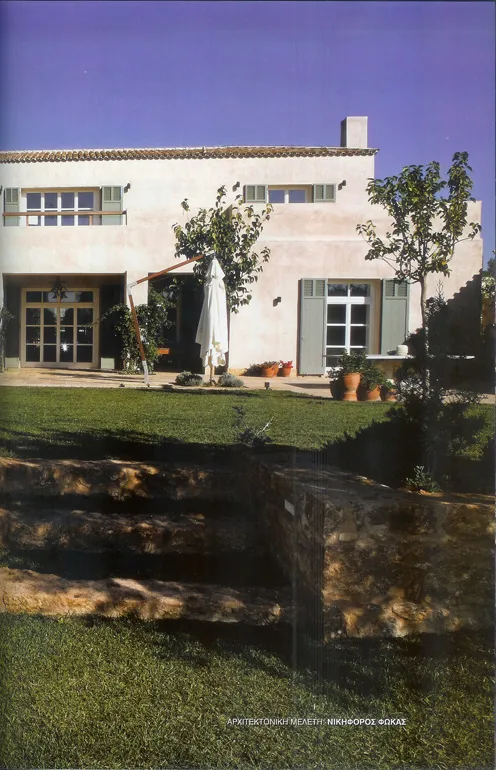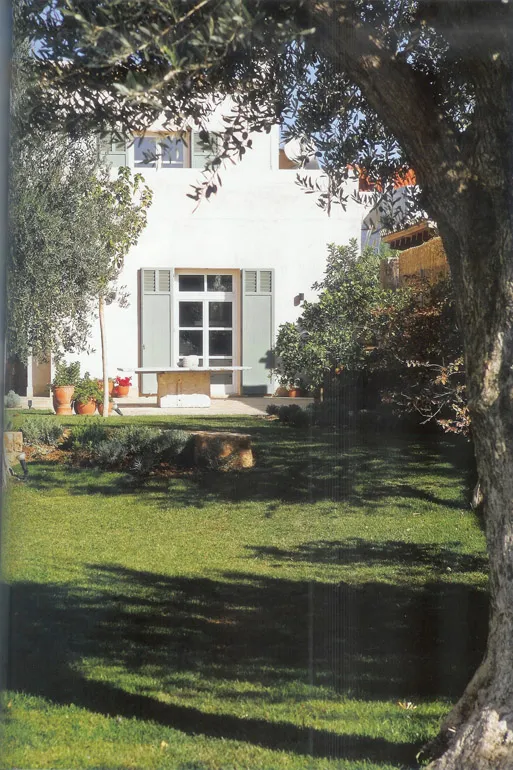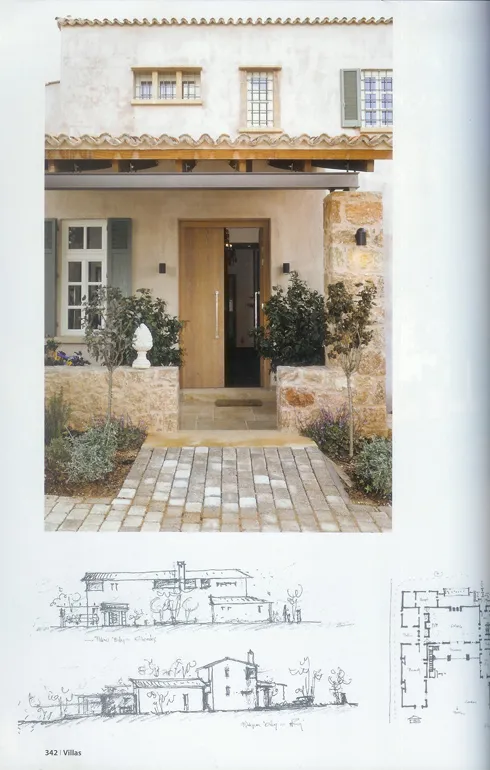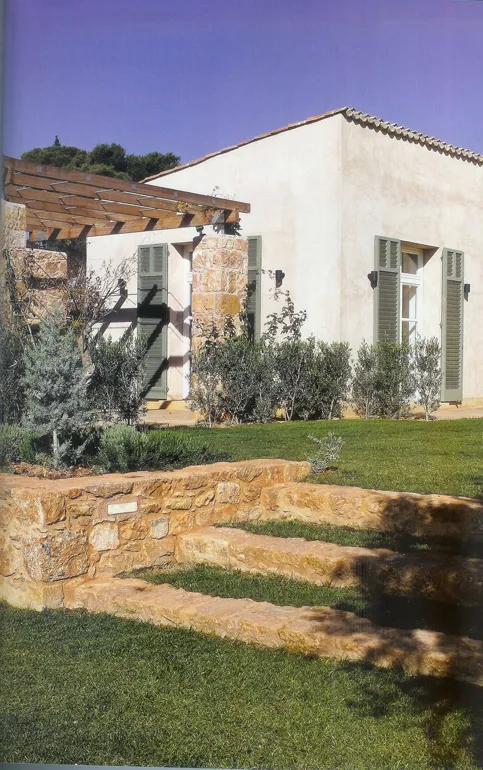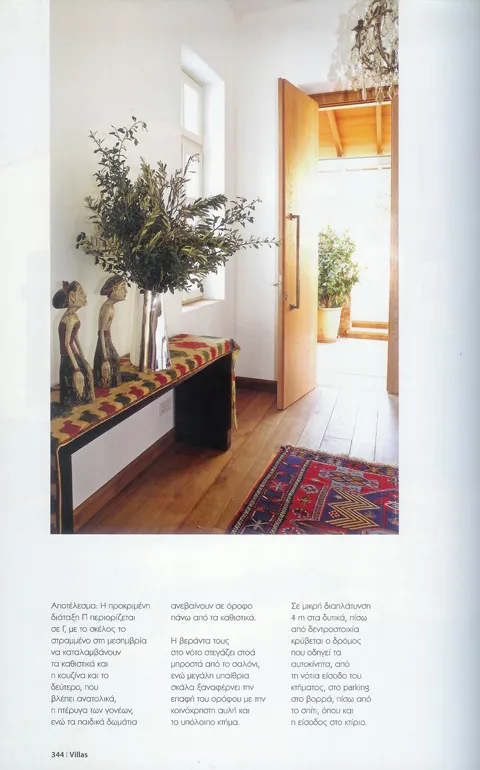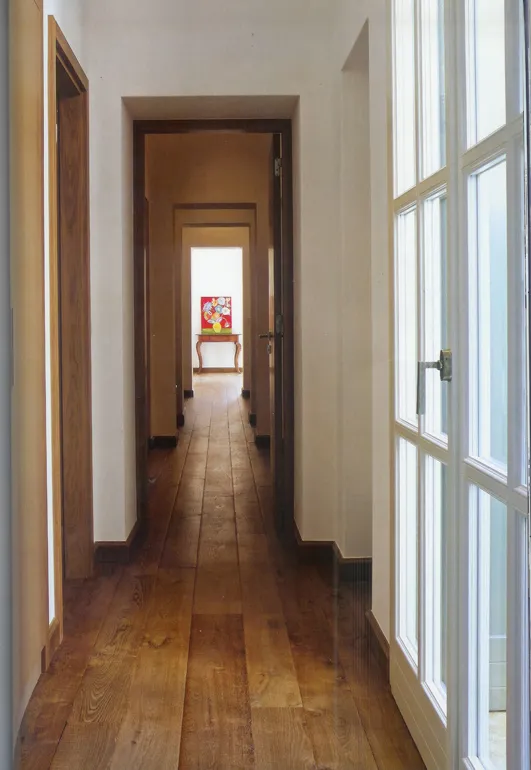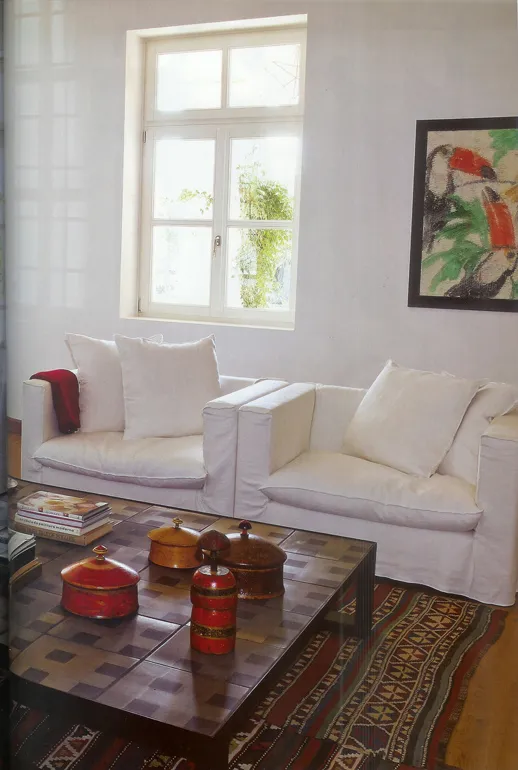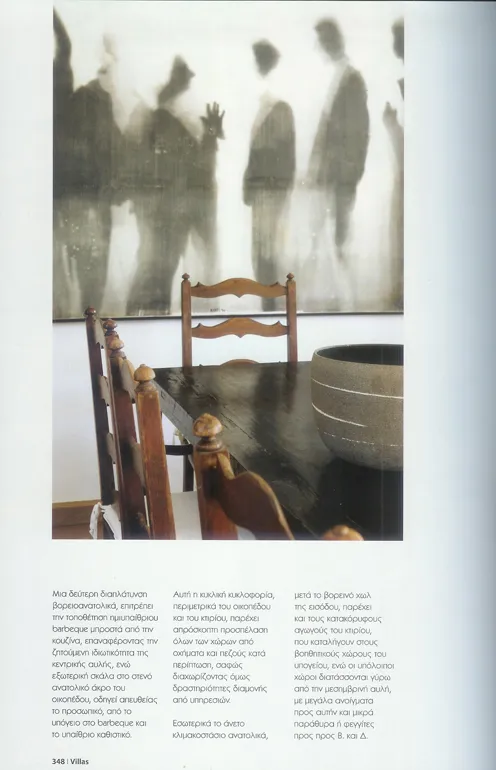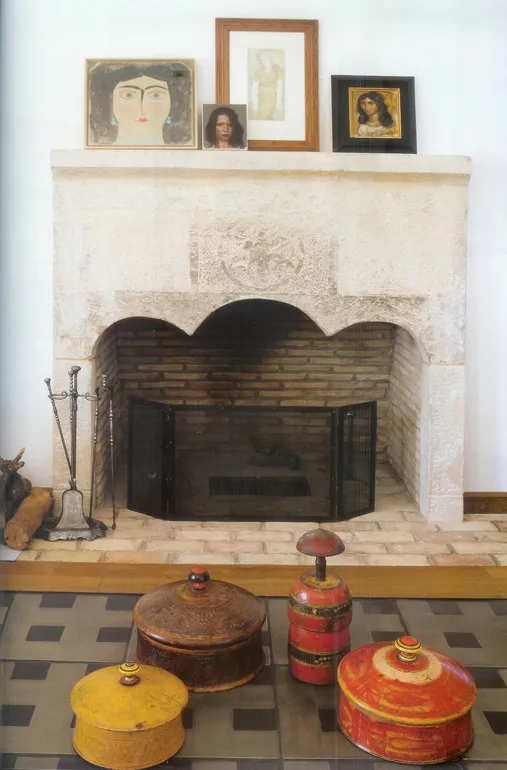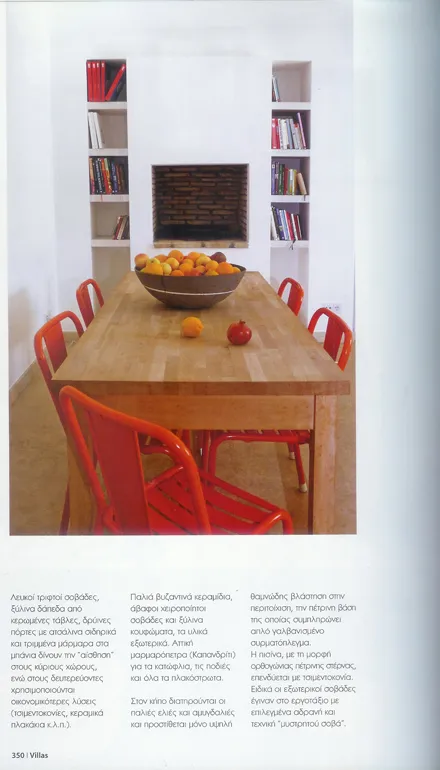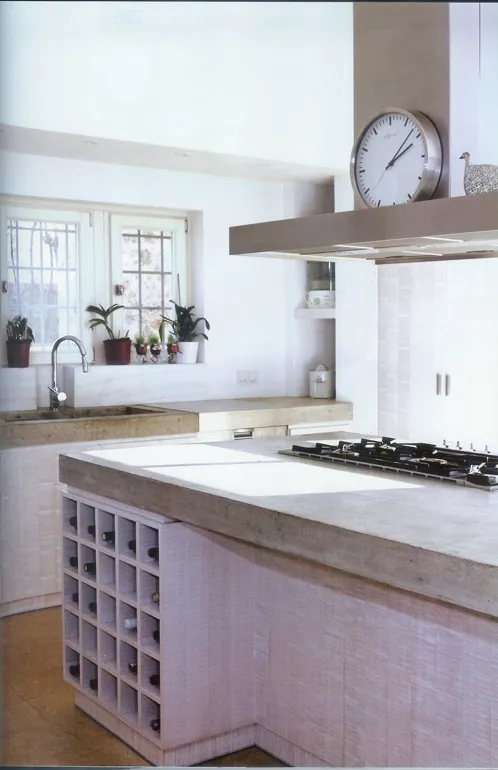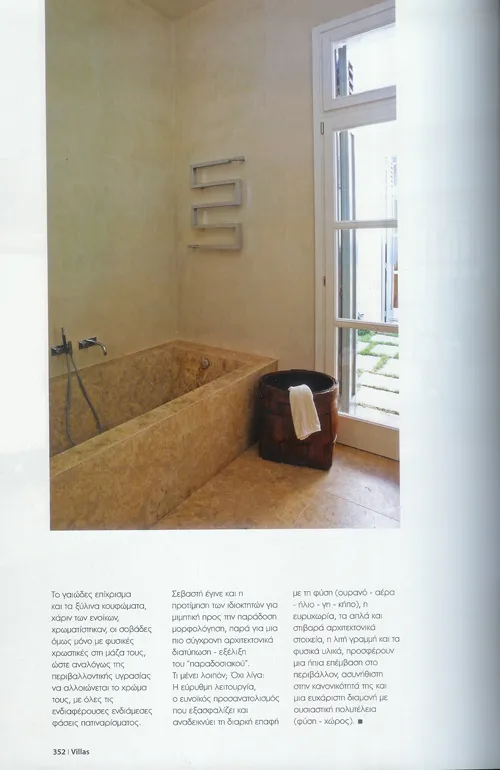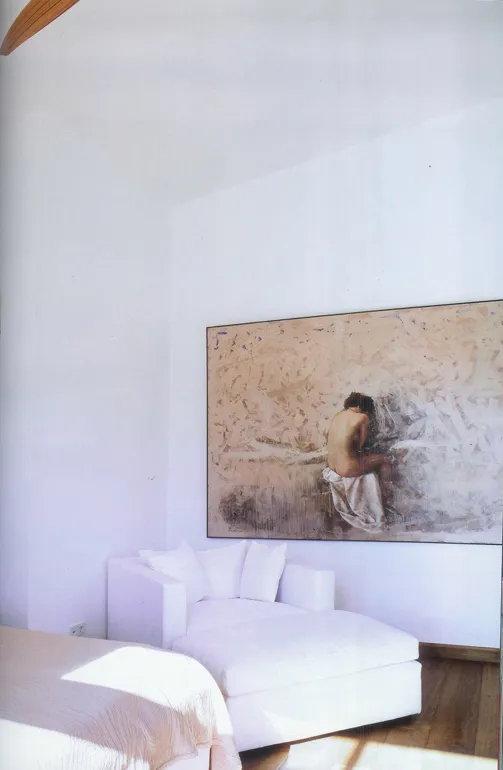- Athens Insider, I.37, ’05 “The Mykonos white houses”
- Huffington Post, ’16 “In Mykonos there is a traditional dovecote that, however, hosts people”
- Biennale di Venezia, 10th, ’06 “The Urbanity of the Aegean Archipelago”
- Onassis Cultural Center, ’14 “ESO 2014”
- Ek magazine, I.139, ’09 “Nikiforos Fokas Architecture”: Functional flow, Technical coherence, Poetic attitude
- Mykonos Villas vol.4, ’22, Editorial: “Contemporary architecture in the field of vernacular creation”
- Mykonos Houses, ’09 “Notes for landscape design on the dry island”
- Mykonos Villas vol.4, ’22 “Discreet appearance”
- House Life & Style, I.6, ’08 “Discreet comfort”
- Villas, ’08 “A traditional approach”
- Ek magazine, I.79, ’03 “Country residence in Mykonos”
- Mykonos Houses 05 “Away from the hard, technological environment”, “A hug facing South”
- Ek magazine, I.89, ’04 “Residence in Mykonos”
- Casa Vogue, I.100, “Mykonian hug”
- Maison & Decoration, I.1, ’02 “Summertime microkosmos”
- Maison Special Deco, I.6, ’99 “Architecture and nature in harmony”
- Mykonos Houses, ’09 “Adjustment to the rocky landscape”
- GLOW magazine, I.78, ’09 “Interview”
Interview / “GLOW” magazine, Summer 2009, Issue 78.
Q: Do you feel you mainly are an artist or a mechanic? And in which case one prevails over the other?
A: Artist due to natural inclination, I became a mechanic along the way.
Technique is dominant, building is a subject to be used, not just a visual object, but no discount on artistic concept is allowed due to technical issues.
Ideally, technique and aesthetics match, what is functionally and technically correct is beautiful, don’t ask me, of course, to number the parameters of the functionally and technically correct.
Q: What is the first thing you think of / envision before you start designing a customer’s home?
A: The building in its surroundings.
Q: Is there a work of art that “marked” you when you first saw it, one that you would like to see every day in the space you live and work?
A: Many, but usually Picasso provoked me a bit more. I would never like to see the same artwork every day.
Q: How much and in what way does the trend to eco living affect architecture?
A: We are at the beginning, I hope it will affect holistically.
Q: We hear a lot about bioclimatic architecture. How feasible is its implementation in our country?
A: But the traditional architecture has always been bioclimatic, depending on the means available.
Bioclimatic is always the way I set up a house with its openings and courtyards.
All new techniques and materials certified must be integrated into the construction.
It is not just feasible, it is inevitable, otherwise we have no future.
Q: Is there a general trend in architecture today? Is it influenced by the place, the conditions (climatic or social / economic), the culture, something else?
A: There is pluralism, as in everything in the world village, and it is influenced by everything you mentioned.
Of course, as you can see, fashion trends and “good taste” are social parameters not concerning the essence of architecture but they can be incorporated at will.
Good and bad architecture exists in every style.
Q: Which area or city of the world would you like to live in from those you have visited or just seen and why?
A: In Athens, for the sweetness and purity of its climate, from which of course we can only get a little taste nowadays and of course because it is my country.
Everywhere in the Aegean in the summer.
Q: What building in the world have you admired for its architecture?
A: Every ancient Greek temple as it is now, without roof, with its architectural members naked, sunbathing in the Greek light. Of course, it is not exactly a building, as you mean it, but I am referring to the poetics of the space created.
Q: Is there something that can be changed – and what would it be – in big Greek cities’ architecture (mainly Athens and Thessaloniki) to change the unpleasant image they present?
A: The mentality of their citizens and accordingly that of their governors.
Q: If these cities were to be demolished, would there be any building/s you would like to maintain?
A: Many.
Q: In Greece, the building production is expanding in recent years, but is there aesthetic and proper architectural design?
A: A small percentage of the building production is entrusted to architects, a small percentage of us are actually doing architecture. Quality exists in there.
Q: Why does the State trust more foreign architects for big projects and not Greek creators?
A: I don’t know if this is true, but anyway, the big flaw of Greece is the public sector, which of course reflects its citizens-voters.
Q: Is there a difference between designing a house in Mykonos and one in Athens? What aspects do you exploit from each location?
A: The process, the reflection, the method is the same, the data of the sites are different. In Mykonos, nature and the local vernacular are dominant. In Athens you move more freely.
Q: The landscape in Mykonos is overbuilt in areas where we used to see only pastures. How much does the basic architectural regulations limit you and in what ways do you realize your inspiration?
A: When I started, the landscape and the local vernacular were an inspiration, now almost a memory. The overbuilding and the parody of the neo-Myconean folklore lead me to more austere forms.
Of course the simple, handmade, successive construction is always welcome for small, low budget projects, but as far as the artificial “traditional style” is concerned, please no more!
Q: Is the sea, the sky, the wind and flora the strongest arms in your architectural palette than an urban environment with all its features?
A: Of course not, interesting architecture can flourish everywhere. Others are the factors that reduce it.
Q: Does the renovation of a building offer a substantial creative field and how?
A: The deepening in style and techniques of another era enriches your architectural palette – to use your expression – and it manifests itself unexpectedly during the creation of the project itself and not necessarily mimetically.
Q: Why is it an expensive sport to deal with architecture?
A: It is expensive if you consider that the building is what the town planning regulations and the contractor provides you.
It is expensive if you consider architecture as the fancy stuff proposed by speculative decorators and –only by title- architects.
Is quality expensive? Of course you can live without it. But not the city. Neither does the planet.
Q: How is your dream home?
A: With minimum to achieve maximum.
